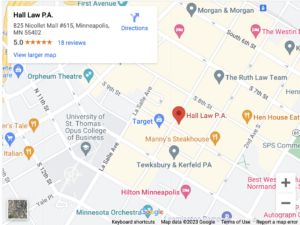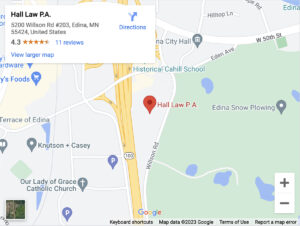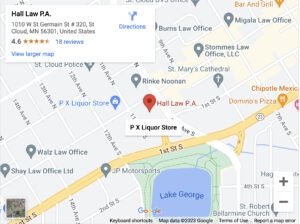
Broken bones are one of the most common types of injuries personal injury victims suffer. While common, these injuries can result in significant pain and complications that make life difficult for victims.
Here is what you need to know about broken bones and personal injury claims involving them.
What Types of Broken Bone Injuries Can Occur?
Bones often break because of some type of trauma applied to them. A fracture is another name for a broken bone. Anyone at any age can suffer a broken bone, though some people are predisposed to breaks due to their age or health conditions.
There are various types of broken bone injuries, including:
- Transverse fracture – A fracture that involves a break in a straight line across the bone, usually caused by traumatic events such as falls or auto accidents
- Stress fracture – A small crack in the bone that can be difficult to observe with a regular x-ray
- Compression fracture – A crushing break that widens and flattens the bone
- Spiral fracture – A fracture that spirals around the bone, usually occurring in long bones in the body, such as the leg or arm, and caused by a twisting injury
- Greenstick fracture – A partial fracture in which the bone bends but does not separate into separate pieces, more common among children
- Impacted fracture – A break in which the broken bone ends are driven together because of the force of the injury
- Oblique fracture – A diagonal break across the bone, often occurring in long bones and caused by a sharp blow that occurs at an angle, such as a fall or other trauma
- Avulsion fracture – A small fracture caused by the pulling off the bone by a ligament or tendon, more common in children
- Comminuted fracture – A break of three or more pieces of the bone and may leave bone fragments at the fracture site, often occurring because of high-impact trauma, such as a car wreck
- Segmental fracture – A fracture that occurs in two places in the bone, potentially causing complications or requiring a longer recovery time
There are several different causes of these fractures.
What Are the Common Causes of Broken Bones?
When a bone has strong pressure placed upon it, it can break.
Common causes of fractures include:
- Car accidents
- Motorcycle accidents
- Truck accidents
- Boating accidents
- Pedestrian accidents
- Bicycle accidents
- Nursing home abuse and neglect
In many of these situations, another person’s negligence is to blame for the injury.
What Are the Symptoms of Broken Bones?
If you were involved in any of the types of accidents described above, it is important to seek prompt medical attention so your injuries can be properly diagnosed.
Signs and symptoms of a broken bone include:
- Acute pain in a particular part of the body
- A bone protruding from the body
- Swelling
- Inability to put weight on the affected area
- Weakness in the affected area
- Pain that worsens when you apply pressure to the affected area of the body
- Inability to use a body part
- Dizziness
Seeking prompt medical treatment can help you get your injury properly diagnosed and can also help support your legal claim for compensation.
How To Diagnose a Broken Bone
Broken bones are usually diagnosed through a physical exam and an imaging test, such as one or more of the following:
- X-ray – X-rays use electromagnetic radiation to generate images of bones, tissues, and structures inside the body.
- Magnetic resonance imaging (MRI) – An MRI shows detailed images of a specific portion of the body, including bones, cartilage, and ligaments.
- CT scan – CT scans provide more detailed pictures of bones and surrounding tissues.
- Bone scan – Bone scans are sometimes used when X-rays don’t capture a fracture that is suspected.
Once your doctor diagnoses your fracture, they can begin building a treatment plan.
How Are Broken Bones Treated?
The treatment for broken bones depends on the type of fracture, which bone was broken, how the break occurred, and its severity. Possible treatment may include:
Immobilization
Immobilization is used for mild breaks in which the bones do not move too far out of place. Your doctor may put you in a splint or cast for a few weeks or months.
Realignment
In some cases, your doctor may recommend realigning your bones by pushing the bone back into place. This outpatient procedure is usually followed by giving you a splint or cast.
Surgery
More severe breaks may require surgery. There are various types of surgeries that may be used, depending on the type of fracture and the damage to your bones. Surgical options may include the following:
Internal Fixation
An internal fixation involves the realignment of bones to their correct position. During this procedure, your surgeon inserts pieces of metal into the bone, such as rods, plates, screws, pins, or wires to hold the bone in place while it heals.
Follow-up surgeries may be necessary to remove these metal pieces. You will also be instructed to limit your movement while you are recovering.
External Fixation
An external fixation involves the use of screws in the bone on each side of the fracture and then connects them to a brace or bracket. This provides a temporary stabilization of the fracture while the bone heals.
Arthroplasty
This procedure is used when you fracture a joint. Your surgeon removes the joint and replaces it with an artificial one.
Bone Grafting
Bone grafting involves the insertion of additional bone tissue to rejoin the fractured bone. This may be coupled with an internal fixation to hold the bone together as it regrows. This is then followed by immobilization. This procedure is sometimes used when the fracture is severely displaced or when the bone is not healing as it should.
What Compensation Can I Recover for Broken Bones in a Personal Injury Case?
If you suffered a broken bone injury because of someone else’s negligence, you may be able to recover various damages for the harm you’ve suffered. This could include economic and non-economic damages.
Economic Damages
Economic damages are losses that can be quantified and are tied to some direct financial loss, such as:
- Actual medical costs
- Anticipated future medical expenses
- Lost wages
- Loss of future income
- Mileage costs to and from treatment
- Property damage
Bills, invoices, and receipts can help establish economic damages.
Non-Economic Damages
Non-economic damages include losses that accident victims suffer that cannot be as easily quantified, including:
- Pain
- Suffering
- Emotional distress
- Disfigurement
- Humiliation
These damages are, by nature, more difficult to prove. A personal injury lawyer can help assemble the evidence and arguments to help you recover fair compensation for all of your accident-related losses.
Contact Our Minneapolis Personal Injury Lawyers For a Free Consultation To Discuss Your Broken Bones
Did you suffer a broken bone because of someone else’s negligence? If so, Hall Law Personal Injury Attorneys can help. We offer a free case review to discuss your legal rights and options. We can help you pursue full compensation for your medical expenses, lost wages, and pain and suffering. Call us today at (800) 292-1979 for your free case evaluation.



